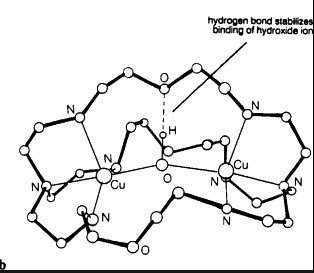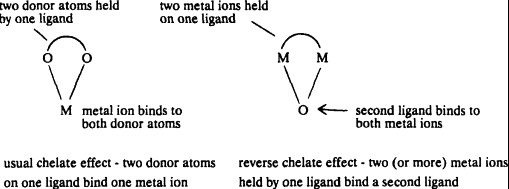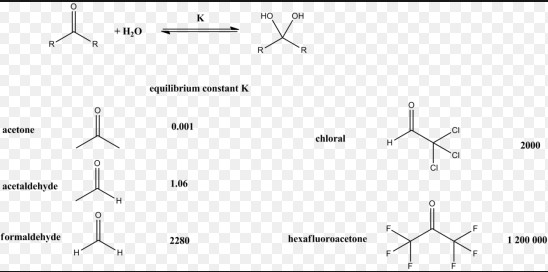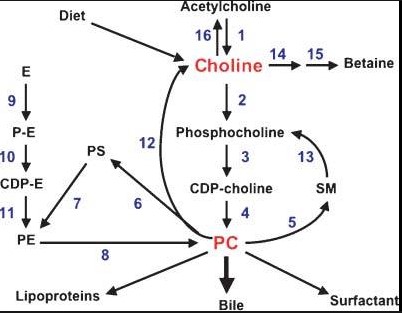Chemical reactions are the backbone of numerous processes in nature and industry, governed by the principles of equilibrium that dictate the conditions under which reactions proceed or halt. At the heart of understanding these processes lie two critical concepts: the equilibrium constant and the formation constant. These constants offer insights into the dynamics of chemical reactions, helping scientists and engineers predict and manipulate outcomes.
The difference between the equilibrium constant (K_eq) and the formation constant (K_f) lies primarily in their application and calculation. K_eq applies to general reactions and is calculated based on the concentrations of reactants and products at equilibrium. In contrast, K_f is specific to the formation of complexes from ions in solution, reflecting the stability of the resulting complex.
Equilibrium constants provide a window into the balance of chemical reactions, indicating whether reactants or products are favored under certain conditions. Formation constants delve deeper into the realm of complex chemistry, offering a measure of how tightly ions or molecules bind to form complexes. Understanding these concepts not only enhances our grasp of chemical reactions but also aids in the practical application of chemistry in various fields, from pharmaceuticals to environmental science.

Basics of Equilibrium
Definition of Equilibrium Constant (K_eq)
In the realm of chemistry, reactions often reach a point where the rates of the forward and reverse processes equalize, causing no net change in the concentrations of reactants and products. This state is known as equilibrium. At equilibrium, a crucial figure known as the equilibrium constant, or K_eq, comes into play. It quantifies the ratio of the concentration of products to the concentration of reactants, each raised to the power of their respective coefficients in the balanced chemical equation. The formula for a general reaction ��+��↔��+��aA+bB↔cC+dD is expressed as:
���=[�]�[�]�[�]�[�]�Keq=[A]a[B]b[C]c[D]d
Here, [�][A], [�][B], [�][C], and [�][D] represent the molar concentrations of the reactants and products, respectively.
Role in Chemical Reactions
Understanding K_eq is pivotal for several reasons:
- Prediction: It helps predict the direction in which a reaction will proceed.
- Equilibrium Position: Offers insights into the equilibrium position, indicating whether products or reactants are favored.
- Reaction Quotient: By comparing K_eq with the reaction quotient, �Q, chemists can deduce whether a reaction at non-equilibrium conditions will shift to the right (towards products) or to the left (towards reactants) to reach equilibrium.
Exploring Formation Constants
Definition of Formation Constant (K_f)
Focusing on the formation of complex ions in solution, the formation constant, or K_f, specifically measures the stability of these complexes. It’s a subset of equilibrium constants, representing the equilibrium between the complex ion and its components in a solution. For a reaction where ��+��↔���mM+nL↔MLn, where �M is a metal ion and �L is a ligand, the formation constant is given by:
��=[���][�]�[�]�Kf=[M]m[L]n[MLn]
Specificity to Complex Formation Reactions
K_f is crucial for understanding:
- Complex Stability: Higher K_f values indicate stronger complexes.
- Selective Binding: Helps predict how selectively a metal ion will bind to a ligand.
Key Differences
Context and Usage
- General vs. Specific: While K_eq is applicable to a broad range of reactions, K_f zeros in on the formation of complexes, providing a more specific context.
Calculation Variance
- Diverse Equations: K_eq is calculated using the concentrations of general reactants and products, whereas K_f focuses on the concentrations related to complex formation.
Stability Indication
- Reaction Stability: K_eq informs us about the overall equilibrium of a reaction. In contrast, K_f highlights the stability of a specific complex formed in solution.
Significance in Chemistry
Predicting Reaction Direction
Both K_eq and K_f play instrumental roles in:
- Foreseeing Reaction Outcomes: By evaluating these constants, chemists can determine which side of the reaction is favored under equilibrium conditions.
Calculating Concentrations
- Determining Molar Concentrations: These constants aid in calculating the equilibrium concentrations of reactants and products, crucial for chemical synthesis and analysis.
Thermodynamics Insights
- Gibbs Free Energy: A direct relationship exists between equilibrium constants and Gibbs free energy, Δ�ΔG, offering insights into the spontaneity of reactions. For a reaction at a constant temperature, Δ�ΔG can be calculated using the formula:
Δ�=−��ln(�)ΔG=−RTln(K)
Where �R is the universal gas constant and �T is the temperature in Kelvin. This equation underscores the connection between K_eq/K_f and the energetic favorability of reactions.

Factors Affecting Constants
Temperature and Pressure
Temperature and pressure significantly impact K_eq and K_f values, altering how chemical reactions reach equilibrium. The effect of these factors is rooted in the principles of thermodynamics and kinetics.
- Temperature: An increase in temperature generally favors endothermic reactions, shifting K_eq towards the products for these reactions. For exothermic reactions, higher temperatures shift K_eq towards the reactants. This is due to the dependence of the reaction rate on temperature, which is described by the Arrhenius equation.
- Pressure: Changes in pressure mostly affect reactions involving gases. An increase in pressure shifts the equilibrium towards the side with fewer moles of gas, as described by Le Chatelier’s principle.
Ionic Strength and Medium
The ionic strength and medium in which a reaction takes place can also influence K_eq and K_f. These environmental conditions affect the activity coefficients of ions in solution, thereby impacting the calculated values of the constants.
- Ionic Strength: High ionic strength can shield the charges of ions, altering their activity and, consequently, the equilibrium position.
- Medium: The solvent or medium can affect the solubility of reactants and products, particularly in ionic reactions. Polar solvents, for example, can stabilize ions, affecting the formation constant of complexes.

Practical Applications
Industrial Synthesis
In industrial synthesis, understanding and manipulating K_eq and K_f allows for the optimization of production processes. This is crucial in industries ranging from petrochemicals to polymers, where the efficiency of product formation directly impacts profitability.
- Process Optimization: Adjusting temperature, pressure, and medium to favor the formation of desired products.
- Yield Improvement: By shifting equilibrium positions, industries can maximize yields, reducing waste and improving efficiency.
Pharmaceutical Development
In pharmaceutical development, the stability of complexes, as indicated by K_f, and the equilibrium between various forms of a drug compound, as indicated by K_eq, are critical for effective drug formulation and stability.
- Drug Formulation: Designing drugs that remain stable under physiological conditions.
- Efficacy and Stability: Ensuring that active ingredients maintain their efficacy over time, without decomposing or reacting undesirably.
Environmental Chemistry
K_eq and K_f find significant applications in environmental chemistry, particularly in pollution control and remediation strategies. These constants help in understanding the behavior of pollutants and designing methods to mitigate their effects.
- Pollutant Behavior: Predicting how pollutants will interact with natural components, helping in assessing their impact.
- Remediation Strategies: Developing strategies to remove or neutralize pollutants, such as by shifting the equilibrium of reactions that detoxify harmful substances.
Advanced Considerations
Limitations and Assumptions
While K_eq and K_f are invaluable tools in chemistry, they come with limitations and are based on certain assumptions. Understanding these constraints is essential for the accurate application of these constants.
- Ideal Conditions: Many calculations assume ideal behavior, which might not hold in complex, real-world scenarios.
- Dynamic Equilibria: In systems where multiple equilibria interact, the application of simple K_eq or K_f values may not fully capture the dynamics at play.
Beyond Simple Reactions
Handling complex equilibria involves considering interactions beyond simple one-step reactions. This includes situations where multiple steps or parallel reactions occur, requiring a more nuanced approach to predict outcomes.
- Sequential Reactions: Where the product of one reaction serves as the reactant for the next, affecting overall equilibrium.
- Competitive Binding: In complex formation, understanding how different ligands compete for binding sites on a metal ion can influence the effective K_f.
Frequently Asked Questions
What is an Equilibrium Constant?
An equilibrium constant (K_eq) is a number that expresses the ratio of the concentrations of products to reactants at the point of equilibrium for a reversible chemical reaction. It provides a quantitative measure of the position of equilibrium, indicating whether the products or reactants are favored in the reaction.
How is a Formation Constant Different?
A formation constant (K_f) specifically refers to the equilibrium constant for the formation of a complex in a solution from its constituent ions. It indicates the stability of the complex formed, with higher values suggesting a greater tendency of the ions to combine and stay bonded.
Why are Equilibrium and Formation Constants Important?
These constants are crucial for predicting the direction and extent of chemical reactions. By understanding the equilibrium and formation constants, chemists can manipulate conditions to favor the production of desired products, whether in industrial synthesis, pharmaceutical development, or environmental remediation.
Can Temperature Affect K_eq and K_f?
Yes, temperature can significantly impact both K_eq and K_f. As temperature changes, it can alter the balance of a chemical reaction, shifting the position of equilibrium. This is because reaction rates and hence equilibrium positions are temperature-dependent, according to the Arrhenius equation.
Conclusion
The concepts of equilibrium and formation constants serve as fundamental tools in the chemistry toolkit, providing essential insights into the behavior of chemical reactions under various conditions. By distinguishing between the general equilibrium constant and the specific formation constant, scientists gain the ability to predict reaction outcomes with greater precision, tailor chemical processes, and innovate in fields as diverse as medicine, environmental management, and industrial manufacturing.
The exploration of these constants not only enriches our theoretical understanding of chemistry but also underscores the practical importance of chemical principles in everyday applications. As we continue to unravel the complexities of chemical reactions, the knowledge of equilibrium and formation constants will remain pivotal in advancing scientific discovery and technological innovation.

